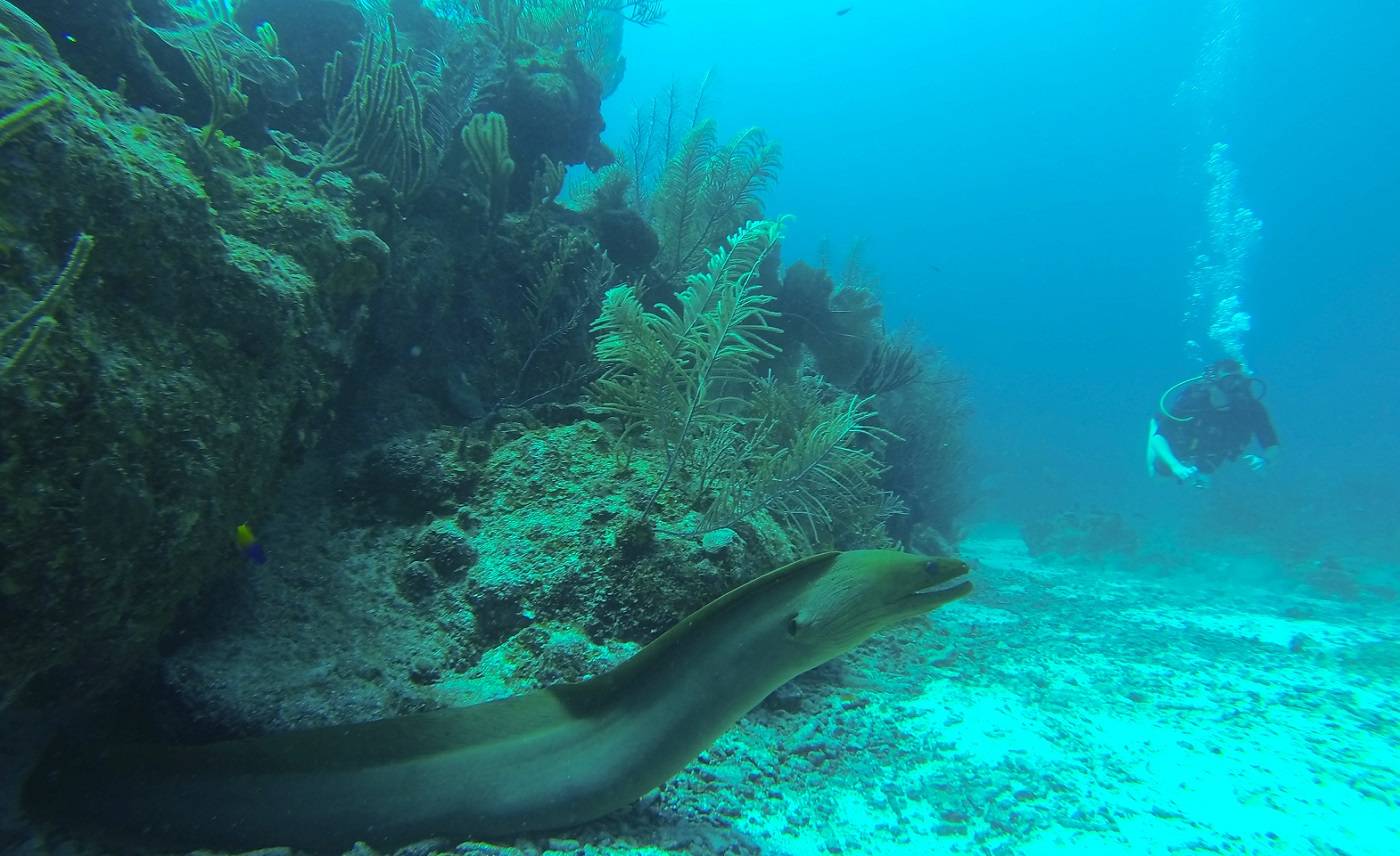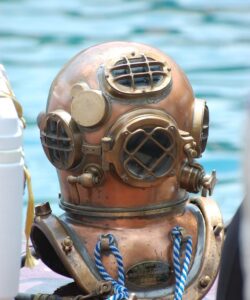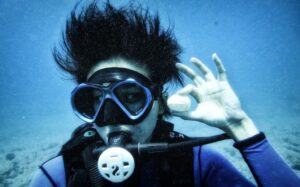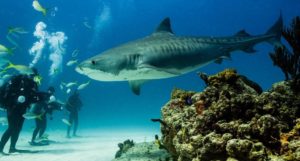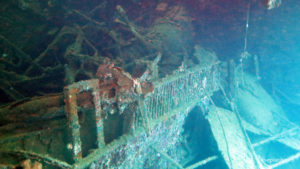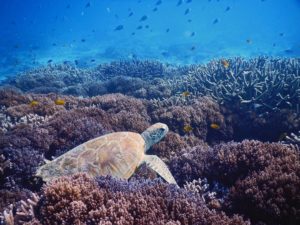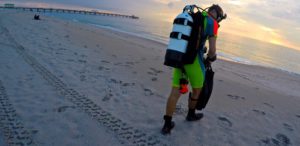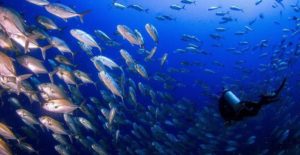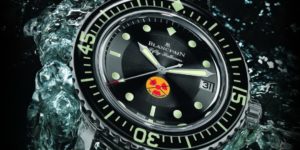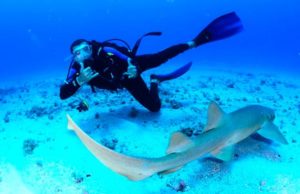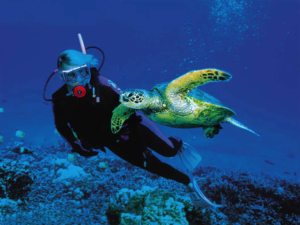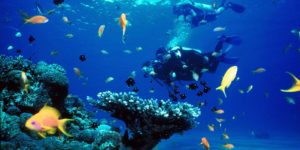The barrier reef off Ambergris Caye is part of the world’s longest reef. Divers can visit two marine reserves, which protect sea turtles and a healthy reef system.
Diving in Belize is renowned for its massive and healthy coral reefs, the variety of pelagic and reef fish, and the clear, comfortable water (wet suits are usually optional). The Belize Barrier Reef runs just a few hundred yards off of Ambergris Caye. A wide range of dive opportunities are found in a relatively small area close to shore, maximizing variety and minimizing boat and travel time.
Diving and Snorkeling at Hol Chan National Marine Reserve off Ambergris Caye
The Hol Chan National Marine Reserve is located just four miles south of San Pedro, on the southern end of Ambergris Caye. “Hol Chan” is Mayan for “little channel,” and refers to the narrow, shallow pass, or “quebrada,” through the reef. Originally established to protect the area around the pass, the reserve now interlinks coral reef, seagrass, and mangrove habitats.
The main dive site is on the protected side of the reef, just inside the pass. Fish are pushed through the pass by the currents, then thrive in nutrient-rich waters where they are protected from fishermen. The result is the kind of diving seen in nature documentaries, with teeming schools of more than 160 species of fish, as well as almost 40 species of coral. Because it’s both shallow (between 20 and 30 feet) and clear, Hol Chan is also a good snorkeling site. A visit to Shark-Ray Alley, just a minute or two away, offers the chance to get up close and personal with gentle nurse sharks and swooping rays.
Belize’s Bacalar Chico National Marine Reserve
Founded in 1996, Bacalar Chico National Marine Reserve covers the northern part of Ambergris Caye, all the way north to the Mexican border. It contains important nesting sites for endangered green and loggerhead sea turtles and features Rocky Point, the only place on the Meso-American Reef where the reef touches the shoreline.
Tranquility Bay Resort is the only resort located inside the marine reserve’s boundaries.The resort’s small dive operation (most gear rental available) arranges custom trips for guests. Guests at other resorts can also book a dive if there is room..
Open-Water Scuba Diving Over Belize’s Meso-American Reef
The Belize Barrier Reef is just that: a barrier that protects the shoreline from the typically white-capped seas. It is broken at several points and bypasses through the coral, which allows dive boats access to the rougher water and the deeper canyons and walls of the open side of the reef.
Diving through the coral canyons is like following a maze underwater. The coral system is healthy and colorful, and in addition to reef fish, reef sharks, nurse sharks, and sea turtles are plentiful. The surface water here is typically a bit rough: Whitecaps are common, and swells can exceed 10 feet. Boat rides to dive sites, while short, can be a bit of an adventure. Divers prone to seasickness should bring Dramamine. And everyone should bring a camera.
Essential Diving Checklist for Belize’s Barrier Reef
Before the Dive: Preparation and Safety
- Certification and Dive Insurance: Ensure you have your PADI, NAUI, or other recognized diving certification card with you. Additionally, consider dive insurance for peace of mind.
- Health Check: Assess your fitness level and ensure you’re in good health before diving. A medical check-up is advisable if you have any concerns.
- Dive Briefing: Attend the dive briefing. Understand the specifics of the dive sites you will visit, including depth, currents, and marine life you may encounter.
Equipment Checklist
- Basic Gear: Mask, snorkel, fins, and a properly fitting wetsuit. While wetsuits are usually optional in Belize’s warm waters, they can provide protection and buoyancy.
- Dive Computer: Essential for monitoring depth, time, and decompression status.
- Regulator with Pressure Gauge: Ensure it’s serviced and in good working condition.
- Buoyancy Control Device (BCD): Check for proper fit and function.
- Weight System: Weights and belts appropriate for your body size and wetsuit buoyancy.
- Underwater Light: Useful for exploring under ledges or inside crevices.
- Dive Knife or Tool: For safety, strapped to your leg or BCD.
- Waterproof Camera: To capture the vibrant coral, fish, and other marine life. Ensure it’s charged and has ample memory.
- Dive Logbook and Pen: To record your dives, depth, and observations.
Personal Items and Extras
- Sunscreen: Reef-safe sunscreen to protect against sunburn without harming the marine ecosystem.
- Hydration and Snacks: Bring water and light snacks for energy during surface intervals.
- First Aid Kit: Including motion sickness medication if prone to seasickness.
- Marine Life Identification Book or App: Enhance your experience by learning about the species you encounter.
- Conservation Mindset: Always practice responsible diving. Do not touch, feed, or disturb the marine life or coral. Respect buoyancy control to avoid damaging the reef.
Post-Dive Care
- Fresh Water Rinse: Rinse your gear thoroughly with fresh water after each dive to remove salt and sand.
- Equipment Maintenance: Check and maintain your equipment regularly to ensure it’s in optimal condition for your next dive.
- Log Your Dive: Record your dive details, including depth, time, and any unique observations or encounters.
By following this checklist, divers can ensure they are well-prepared for a safe and enjoyable exploration of Belize’s magnificent barrier reef and its marine reserves. Whether you’re marveling at the teeming life in the Hol Chan National Marine Reserve or navigating the coral canyons of the open-water Meso-American Reef, preparation is key to a memorable diving experience.

